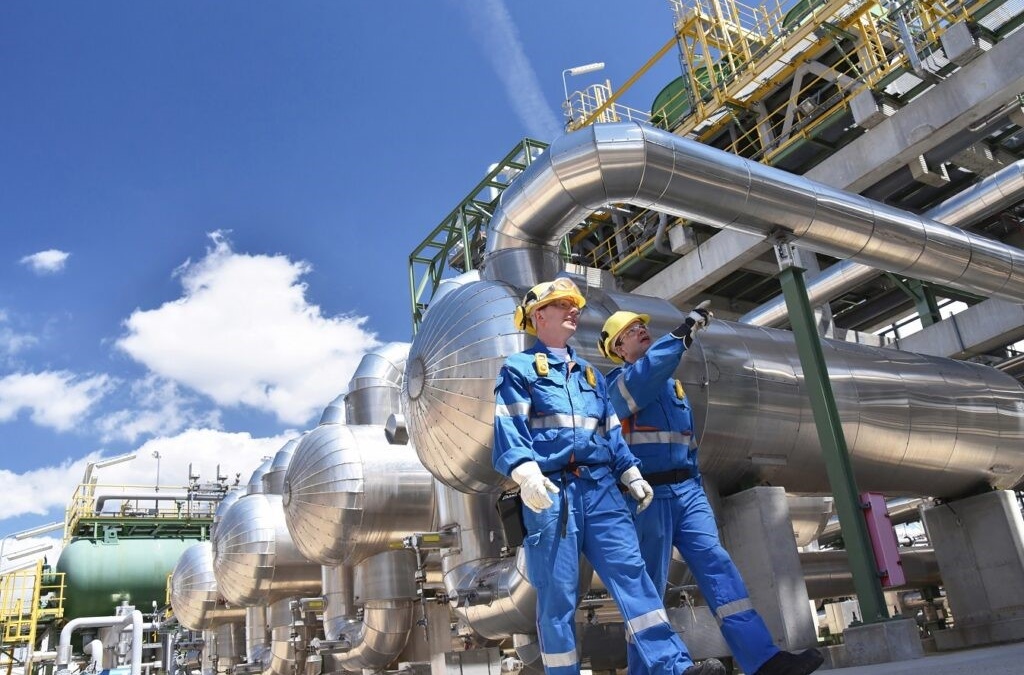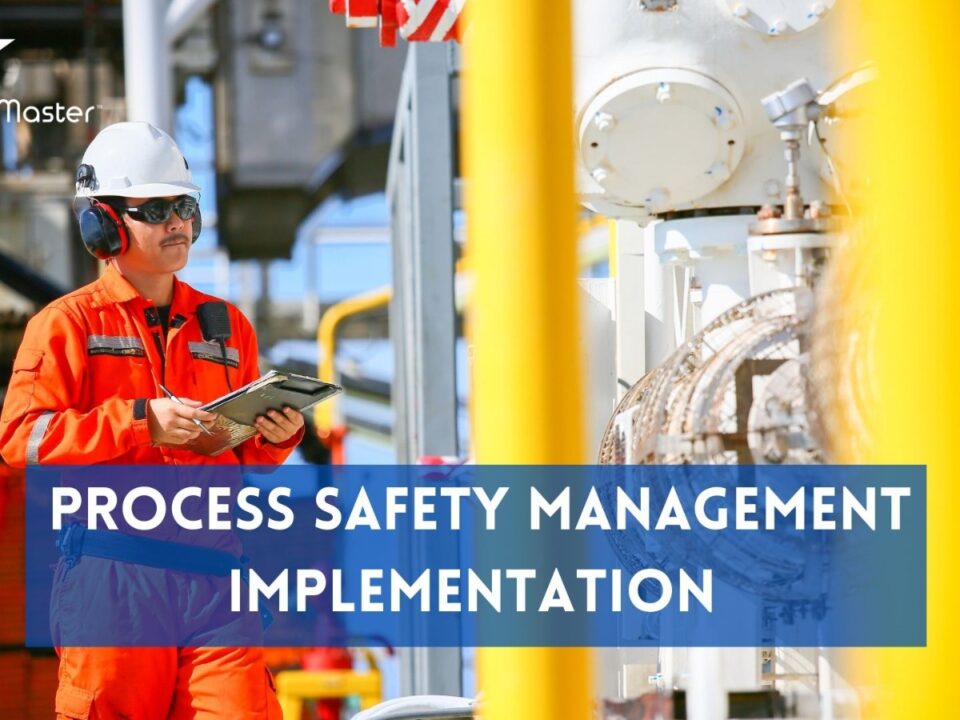Chlorine Safety

The Importance of Fire Risk Assessments for Business Owners Fire Safety Audit
May 5, 2023
Accident Investigation
May 8, 2023If you own or operate a swimming pool, you already know that chlorine is an essential chemical for maintaining clean and sanitary water. However, as with any chemical, there are important safety precautions that need to be taken when handling and using chlorine. In this blog post, we’ll dive into the top tips for chlorine safety, including best practices for storing, handling, and using chlorine in your pool. We’ll also address some of the common misconceptions surrounding chlorine, and provide you with the knowledge you need to ensure a safe and enjoyable swimming experience for you and your family.
Chlorine Safety Hazards: Identifying & Mitigating the Risks
Chlorine is a necessary chemical for keeping pool water free from harmful bacteria and viruses. However, it can be hazardous if not used properly. Accidental releases of chlorine can cause serious health risks and even death. Chlorine gas is also corrosive and can damage metal and electrical equipment. To mitigate the risks of chlorine exposure and accidents, it is important to identify the hazards and implement safety measures. This includes having a proper ventilation system in place, storing chlorine in a safe and secure location, and training employees and pool staff on safe handling procedures. Additionally, regular maintenance and calibration of chlorine equipment can help prevent leaks and spills. By taking the necessary precautions, we can enjoy all the benefits of chlorine without compromising our safety.
A Step-by-Step Guide to Chlorine Handling & Storage
When handling and storing chlorine, it is important to follow a step-by-step guide to ensure safety. First, always wear personal protective equipment, including gloves and eye protection. Next, make sure the area where chlorine will be stored and handled is well-ventilated and free from any potential ignition sources. When mixing chlorine, always add chlorine to water, never water to chlorine. This will help prevent accidental releases of chlorine gas. Additionally, store chlorine in a cool, dry area away from any flammable materials. When transporting chlorine, always use a secure transport vehicle and follow all safety regulations. Following these step-by-step guidelines will help ensure the safe handling and storage of chlorine, making for a safer swimming experience for everyone involved.
Best Practices in Chlorine Handling Procedures
When handling chlorine, it’s crucial to follow best practices to ensure safety. One of the most important things to remember is to never mix chlorine with other chemicals. Doing so can create a dangerous reaction that can release harmful gases, and lead to serious injuries or even death. Always store chlorine in a cool, dry location, away from any flammable materials or ignition sources. Make sure to label all containers with the appropriate information, including the date of purchase, expiration date, and the type of chlorine. If you’re handling or transporting large amounts of chlorine, it’s essential to have the proper safety equipment, including respiratory protection and protective clothing. By following these best practices, you’ll be able to safely handle and use chlorine while enjoying all the benefits it has to offer.
Benefits of Chlorine Alternatives: Exploring Other Options
While chlorine is an effective way to sanitize pool water, it’s not the only option available. In recent years, a number of alternative treatment options have become available that are safer and more environmentally friendly. One such option is using a saltwater chlorinator. This system uses salt to produce chlorine in the water, eliminating the need for harsh chemicals and reducing the harmful byproducts of traditional chlorine treatments. Another option is using ultraviolet light to kill bacteria and viruses in the water. UV systems are effective, efficient, and require less maintenance than traditional treatments. Whatever alternative treatment option you choose, it’s important to research and choose one that works for your pool and your needs. By exploring other treatments, you can find a safer and more sustainable way to keep your pool or spa clean and sanitized.
Protecting Yourself & Others: Personal Protective Equipment Essentials
When it comes to handling chlorine, personal protective equipment (PPE) is critical for keeping yourself and others safe. PPE essentials include gloves, eye protection and respirators when necessary. Before you begin handling chlorine, ensure you have all necessary equipment and are trained on how to use it properly. Always wear gloves when handling chlorine, and be sure to wear eye protection to prevent irritation or burning of the eyes. In some situations, it may be necessary to wear a respirator to prevent inhalation of chlorine gas. By always wearing PPE, you can protect yourself and those around you from potential harm. Remember, safety should always be a top priority when it comes to handling chlorine.
Transporting Chlorine Safely: Dos and Don’ts
When transporting chlorine, it’s important to follow best practices to prevent accidents and ensure safety for everyone involved. Dos and don’ts include using a secure transport vehicle with proper ventilation, avoiding transporting chlorine with other chemicals, and always wearing personal protective equipment. Never leave chlorine unattended while transporting, and make sure to properly secure containers to prevent them from tipping or spilling. It’s also important to follow all safety regulations and guidelines for transportation of hazardous materials. By taking the necessary precautions and following best practices, you can transport chlorine safely and prevent accidents or injuries.
Emergency Preparedness: Responding to Chlorine-Related Incidents
In the event of a chlorine-related incident, it’s important to have an emergency response plan in place. This includes having a designated first responder who is trained in handling chlorine emergencies and has access to appropriate safety equipment. The first step in responding to a chlorine incident is to evacuate the area and call for emergency services. If you have to enter the area to shut off equipment or contain the leak, make sure to wear proper personal protective equipment, including a respirator, chemical resistant gloves, and eye protection. It’s also essential to have a contingency plan in place, including how to provide medical attention to those affected by the incident. By having a thorough emergency response plan, we can be prepared for any chlorine-related incident and minimize the risks to ourselves and those around us.
Staying Informed: Resources for Chlorine Safety Information
There are a variety of resources available for staying informed about chlorine safety. One great place to start is with the organizations responsible for regulating and overseeing the use of chlorine, such as the Occupational Safety and Health Administration (OSHA) and the Environmental Protection Agency (EPA). Both these organizations offer resources and guidelines for dealing with chlorine, including safety regulations and best practices. Additionally, industry organizations such as the National Swimming Pool Foundation and the Association of Pool and Spa Professionals offer training and certification programs for pool and spa professionals. Finally, don’t underestimate the power of online resources such as forums and social media groups, where pool and spa owners and industry professionals can share tips and advice for handling and using chlorine safely. By staying informed and up-to-date on the latest safety information and resources, we can ensure that our use of chlorine is safe and effective.
Conclusion: Embracing Chlorine Safety for a Healthier, Safer Community.
In conclusion, following proper safety precautions when using chlorine is essential to prevent accidents and injuries. Always read and follow the instructions provided on the product label, wear appropriate protective gear, and store chlorine out of reach of children and pets. It’s also important to properly ventilate the area where chlorine is being used to prevent the buildup of toxic fumes. By taking these steps, you can ensure a safer and more efficient use of chlorine for both household and industrial purposes. Remember, safety should always be a top priority when handling any chemical, including chlorine.
Services Offered
Sanjeev Paruthi
TSM TheSafetyMaster® Private Limited
Unit No 221-451-452, SPL1/J, 2nd Floor, Sunsquare Plaza Complex, RIICO Chowk, Bhiwadi 301019, Rajasthan, India
Phone: +91 1493 22 0093/+91-124-4881109
Mobile: +91 7665231743/9413882016
Email: info@thesafetymaster.com
SaferIndiaBetterWorld
If you own or operate a swimming pool, you already know that chlorine is an essential chemical for maintaining clean and sanitary water. However, as with any chemical, there are important safety precautions that need to be taken when handling and using chlorine. In this blog post, we’ll dive into the top tips for chlorine safety, including best practices for storing, handling, and using chlorine in your pool. We’ll also address some of the common misconceptions surrounding chlorine, and provide you with the knowledge you need to ensure a safe and enjoyable swimming experience for you and your family.
Chlorine Safety Hazards: Identifying & Mitigating the Risks
Chlorine is a necessary chemical for keeping pool water free from harmful bacteria and viruses. However, it can be hazardous if not used properly. Accidental releases of chlorine can cause serious health risks and even death. Chlorine gas is also corrosive and can damage metal and electrical equipment. To mitigate the risks of chlorine exposure and accidents, it is important to identify the hazards and implement safety measures. This includes having a proper ventilation system in place, storing chlorine in a safe and secure location, and training employees and pool staff on safe handling procedures. Additionally, regular maintenance and calibration of chlorine equipment can help prevent leaks and spills. By taking the necessary precautions, we can enjoy all the benefits of chlorine without compromising our safety.
A Step-by-Step Guide to Chlorine Handling & Storage
When handling and storing chlorine, it is important to follow a step-by-step guide to ensure safety. First, always wear personal protective equipment, including gloves and eye protection. Next, make sure the area where chlorine will be stored and handled is well-ventilated and free from any potential ignition sources. When mixing chlorine, always add chlorine to water, never water to chlorine. This will help prevent accidental releases of chlorine gas. Additionally, store chlorine in a cool, dry area away from any flammable materials. When transporting chlorine, always use a secure transport vehicle and follow all safety regulations. Following these step-by-step guidelines will help ensure the safe handling and storage of chlorine, making for a safer swimming experience for everyone involved.
Best Practices in Chlorine Handling Procedures
When handling chlorine, it’s crucial to follow best practices to ensure safety. One of the most important things to remember is to never mix chlorine with other chemicals. Doing so can create a dangerous reaction that can release harmful gases, and lead to serious injuries or even death. Always store chlorine in a cool, dry location, away from any flammable materials or ignition sources. Make sure to label all containers with the appropriate information, including the date of purchase, expiration date, and the type of chlorine. If you’re handling or transporting large amounts of chlorine, it’s essential to have the proper safety equipment, including respiratory protection and protective clothing. By following these best practices, you’ll be able to safely handle and use chlorine while enjoying all the benefits it has to offer.
Benefits of Chlorine Alternatives: Exploring Other Options
While chlorine is an effective way to sanitize pool water, it’s not the only option available. In recent years, a number of alternative treatment options have become available that are safer and more environmentally friendly. One such option is using a saltwater chlorinator. This system uses salt to produce chlorine in the water, eliminating the need for harsh chemicals and reducing the harmful byproducts of traditional chlorine treatments. Another option is using ultraviolet light to kill bacteria and viruses in the water. UV systems are effective, efficient, and require less maintenance than traditional treatments. Whatever alternative treatment option you choose, it’s important to research and choose one that works for your pool and your needs. By exploring other treatments, you can find a safer and more sustainable way to keep your pool or spa clean and sanitized.
Protecting Yourself & Others: Personal Protective Equipment Essentials
When it comes to handling chlorine, personal protective equipment (PPE) is critical for keeping yourself and others safe. PPE essentials include gloves, eye protection and respirators when necessary. Before you begin handling chlorine, ensure you have all necessary equipment and are trained on how to use it properly. Always wear gloves when handling chlorine, and be sure to wear eye protection to prevent irritation or burning of the eyes. In some situations, it may be necessary to wear a respirator to prevent inhalation of chlorine gas. By always wearing PPE, you can protect yourself and those around you from potential harm. Remember, safety should always be a top priority when it comes to handling chlorine.
Transporting Chlorine Safely: Dos and Don’ts
When transporting chlorine, it’s important to follow best practices to prevent accidents and ensure safety for everyone involved. Dos and don’ts include using a secure transport vehicle with proper ventilation, avoiding transporting chlorine with other chemicals, and always wearing personal protective equipment. Never leave chlorine unattended while transporting, and make sure to properly secure containers to prevent them from tipping or spilling. It’s also important to follow all safety regulations and guidelines for transportation of hazardous materials. By taking the necessary precautions and following best practices, you can transport chlorine safely and prevent accidents or injuries.
Emergency Preparedness: Responding to Chlorine-Related Incidents
In the event of a chlorine-related incident, it’s important to have an emergency response plan in place. This includes having a designated first responder who is trained in handling chlorine emergencies and has access to appropriate safety equipment. The first step in responding to a chlorine incident is to evacuate the area and call for emergency services. If you have to enter the area to shut off equipment or contain the leak, make sure to wear proper personal protective equipment, including a respirator, chemical resistant gloves, and eye protection. It’s also essential to have a contingency plan in place, including how to provide medical attention to those affected by the incident. By having a thorough emergency response plan, we can be prepared for any chlorine-related incident and minimize the risks to ourselves and those around us.
Staying Informed: Resources for Chlorine Safety Information
There are a variety of resources available for staying informed about chlorine safety. One great place to start is with the organizations responsible for regulating and overseeing the use of chlorine, such as the Occupational Safety and Health Administration (OSHA) and the Environmental Protection Agency (EPA). Both these organizations offer resources and guidelines for dealing with chlorine, including safety regulations and best practices. Additionally, industry organizations such as the National Swimming Pool Foundation and the Association of Pool and Spa Professionals offer training and certification programs for pool and spa professionals. Finally, don’t underestimate the power of online resources such as forums and social media groups, where pool and spa owners and industry professionals can share tips and advice for handling and using chlorine safely. By staying informed and up-to-date on the latest safety information and resources, we can ensure that our use of chlorine is safe and effective.
Conclusion: Embracing Chlorine Safety for a Healthier, Safer Community.
In conclusion, following proper safety precautions when using chlorine is essential to prevent accidents and injuries. Always read and follow the instructions provided on the product label, wear appropriate protective gear, and store chlorine out of reach of children and pets. It’s also important to properly ventilate the area where chlorine is being used to prevent the buildup of toxic fumes. By taking these steps, you can ensure a safer and more efficient use of chlorine for both household and industrial purposes. Remember, safety should always be a top priority when handling any chemical, including chlorine.
Services Offered
Sanjeev Paruthi
TSM TheSafetyMaster® Private Limited
Unit No 221-451-452, SPL1/J, 2nd Floor, Sunsquare Plaza Complex, RIICO Chowk, Bhiwadi 301019, Rajasthan, India
Phone: +91 1493 22 0093/+91-124-4881109
Mobile: +91 7665231743/9413882016
Email: info@thesafetymaster.com
SaferIndiaBetterWorld




